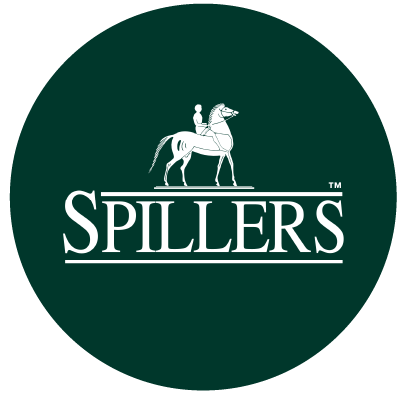What is Cushing's disease or Pituitary Pars Intermedia Dysfunction (PPID)?
Cushing's or more correctly, PPID, is an endocrine (hormonal) disorder involving the pituitary gland. In horses and ponies that do not suffer with Cushing's, dopamine released by neurons in the hypothalamus inhibits the production and release of certain hormones from the pars intermedia or 'intermediate lobe' of the pituitary gland.
In affected horses, these neurons degenerate thus reducing the amount of dopamine released. As a result, cells in the pars intermedia become hyperactive (and often enlarged). They can then produce large amounts of a variety of hormones including the hormone ACTH (adrenocorticotropin hormone). However, it is not fully understood how the increase in these hormone levels results in the clinical signs of Cushing's.
Who is at risk?
Cushing's disease is one of the most commonly diagnosed endocrine disorders in horses. It is most frequently diagnosed in older horses but it can occur in younger horses too. Ponies seem to be more frequently affected than horses, but there doesn't seem to be a breed or sex bias.
What to look out for
If you suspect your horse or pony may have Cushing's it is important to get a confirmed veterinary diagnosis. Signs of PPID/Cushing's disease include;
- Delayed shedding of the winter coat, which can become matted and curly around the legs
- Excessive sweating
- Increased appetite
- Increased drinking and urination
- Lethargy and poor performance
- A pot-bellied appearance
- Loss of muscle and topline
- Abnormal fat deposition particularly above the eyes, the crest of the neck and above the tail head
- Chronic or relapsing laminitis
- Delayed wound healing, increase in infections of the skin and susceptibility to internal parasites.
How nutrition plays a role
Although there is no cure for Cushing's disease, with careful management, appropriate nutrition and veterinary treatment, many horses and ponies continue to have comfortable and active lives for several years.
Nutritional management needs of horses and ponies with Cushing’s is very similar to those with laminitis. The focus should be on maintaining a healthy body condition score (BCS). It’s important to provide a diet that has high fibre and is low in non-structural carbohydrates (NSC). In essence, NSC is the combination of starch, sugar and fructan, which is the stored form of sugar in grass.
Management
- Choose fibre-based feeds that are low in starch and sugar, such as HAPPY HOOF™ as HAPPY HOOF™ Molasses Free.
- Balancers provide a great solution to ensure that your horse or pony receives the correct levels of protein, minerals and vitamins without feeding excess starches, sugar or calories.
- High-starch diets from cereals and mixes can promote rapid weight gain and increase the chances of insulin dysregulation.
- The Laminits Trust provides a list of approved feeds but it is important to remember that these are not the only suitable options to consider.
- You can add oil to your horse's feed (up to 100mls per 100kg of body weight per day) to provide additional energy if weight gain is required. Hpwever this can unbalance the diet so consider choosing feeds that contain a higher level of oils. You can speak to a nutritionists for more advice on this.
- When feeding, give small meals with a maximum of 2kg for horses, less for ponies.
- It is important not to limit forage intake below 15g per kilogram of body weight per day in terms of dry matter. As a guideline, this corresponds to approximately 18g of hay per kilogram of body weight per day for horses and ponies without grazing access.
- Have your forage analysed for water-soluble carbohydrate (WSC-sugar plus fructans) which should ideally be less than 10%.
- You can reduce WSC intake by up to 50% by soaking hay for 12-16 hours in tepid water but results vary and it is not recommended to soak hay for more than 6 hours in hot weather.
- Make all changes to the diet slowly, this includes changes in forage and grazing.
- Maintain a regular exercise programme where possible.
- Additional antioxidants such as vitamin C may be beneficial although not scientifically proven.
Grazing
-
While grass growth persists throughout the year, it notably accelerates during spring and autumn. Therefore it's important to take more caution during this period.
-
Turning out late at night and bringing horses back in by mid morning at the latest is recommended as this is when fructan levels are likely at their lowest.
-
Avoid pastures that lack proper management through regular grazing or cutting. Pastures with mature, stemmy grass or those affected by drought or overgrazing can actually harbor elevated levels of fructans.
-
Restrict grass intake by using a grazing muzzle (that still allows for drinking), grazing with sheep, turning out in a sparse paddock or by strip grazing (remember to back fence and not give access to too much grass in one go).
- Allowing unrestricted turnout for short durations without a muzzle may promote 'gorging' and therefore could be counterproductive - A recent study observed that ponies could consume almost 1% of their bodyweight in only 3 hours.
- Make use of ménages and wood chipped areas for turnout time without access to grass.
- Avoid turning out into pastures that have been exposed to a combination of bright sunlight and low temperatures - such as sunny frosty mornings.
- Do not allow grazing on recently cut stubble such as after hay harvest.
- In known laminitic horses, consider no grazing whilst providing suitable forage.











